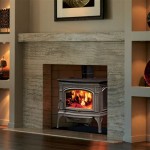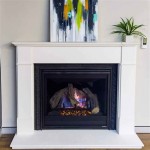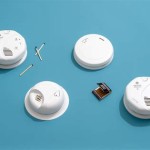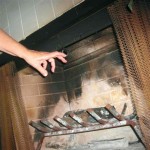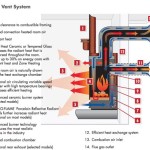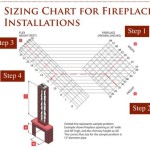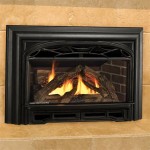```html
Precast Backyard Fireplace: A Comprehensive Guide
A precast backyard fireplace offers a convenient and aesthetically pleasing solution for homeowners seeking to enhance their outdoor living space. Unlike traditional, site-built fireplaces, precast models are manufactured in sections off-site and then assembled in the backyard. This process offers several advantages, including reduced installation time, consistent quality, and a wide range of design options.
The growing popularity of outdoor living has fueled the demand for backyard fireplaces. These structures provide warmth, ambiance, and a focal point for gatherings, extending the usability of outdoor spaces into cooler months. A precast fireplace provides a cost-effective and efficient way to achieve this without the complexities and costs associated with constructing a traditional masonry fireplace from scratch.
Understanding the nuances of precast fireplaces, including material properties, installation requirements, and design considerations, is crucial for homeowners considering this addition. This article aims to provide a comprehensive overview of precast backyard fireplaces, covering essential aspects from selection to maintenance.
Advantages of Choosing a Precast Fireplace
Precast fireplaces present a compelling alternative to traditional masonry structures, offering several key benefits that contribute to their widespread appeal. These advantages stem from the manufacturing process and the materials employed.
Reduced Installation Time: One of the most significant benefits is the drastically reduced installation time. Site-built fireplaces require skilled masons and can take days or even weeks to construct. Precast fireplaces, on the other hand, arrive in manageable sections that can be assembled within a day or two, depending on the size and complexity of the design. This quick installation minimizes disruption to the backyard and allows homeowners to enjoy their new fireplace sooner.
Consistent Quality and Controlled Manufacturing: Precast components are manufactured in a controlled environment, ensuring consistent dimensions and material properties. This contrasts with site-built fireplaces, where variations in materials and workmanship can lead to inconsistencies in appearance and performance. The precast process allows for precise control over the concrete mix, reinforcement, and curing process, resulting in a more durable and reliable structure.
Wide Range of Design Options: Manufacturers offer a diverse selection of precast fireplace designs, ranging from traditional to contemporary styles. Homeowners can choose from various shapes, sizes, and finishes to complement their existing outdoor décor. Some manufacturers also offer customizable options, allowing for personalized design elements such as integrated seating, storage niches, or decorative accents. This flexibility ensures that the fireplace seamlessly integrates into the overall aesthetic of the backyard.
Cost-Effectiveness: While the initial cost of a precast fireplace may be comparable to that of a site-built one, the reduced labor costs associated with installation often make it a more cost-effective option. The quicker installation translates to fewer hours of labor, resulting in significant savings. Furthermore, the consistent quality of precast components minimizes the risk of costly repairs or alterations in the future.
Ease of Maintenance: Precast concrete is a durable and relatively low-maintenance material. Regular cleaning with a mild detergent and water is typically sufficient to keep the fireplace looking its best. Unlike traditional masonry fireplaces, precast models are less susceptible to cracking and mortar deterioration, reducing the need for frequent repairs. The smooth, consistent surface also makes it easier to remove soot and ash buildup.
Key Considerations When Selecting a Precast Fireplace
Choosing the right precast fireplace involves careful consideration of several factors, including size, design, material, and local building codes. A thorough assessment of these aspects ensures that the selected fireplace meets the homeowner's needs and complies with all applicable regulations.
Size and Placement: The size of the fireplace should be proportionate to the size of the backyard and the intended use. A large fireplace in a small backyard can overwhelm the space, while a small fireplace in a large backyard may not provide sufficient warmth or visual impact. Consider the seating arrangement and the number of people who will typically gather around the fireplace. Also, carefully consider the placement of the fireplace, taking into account factors such as wind direction, proximity to structures, and compliance with fire safety regulations. Proper ventilation is crucial to prevent smoke buildup and ensure safe operation.
Design and Style: The design of the fireplace should complement the existing architectural style of the house and the overall aesthetic of the backyard. Choose a style that reflects personal preferences and enhances the visual appeal of the outdoor space. Consider the details of the design, such as the shape of the firebox, the type of stone or brick used, and the presence of decorative features. Some manufacturers offer 3D rendering services that allow homeowners to visualize the fireplace in their backyard before making a purchase.
Material and Finish: Precast fireplaces are typically made from concrete, reinforced with steel for added strength and durability. The concrete can be finished in a variety of ways to achieve different looks, including smooth concrete, textured concrete, or simulated stone or brick. Consider the durability of the finish and its resistance to weathering and staining. Also, consider the color of the concrete and how it will complement the surrounding landscape. Some manufacturers offer a range of color options, while others allow for custom color matching.
Local Building Codes and Regulations: Before purchasing a precast fireplace, it is essential to check local building codes and regulations regarding outdoor fireplaces. These codes may specify requirements for setbacks, flue heights, and fire safety measures. Ensure that the selected fireplace complies with all applicable regulations and obtain any necessary permits before beginning installation. Failure to comply with local codes can result in fines or the requirement to remove the fireplace.
Professional Installation vs. DIY: While some homeowners may be tempted to install a precast fireplace themselves, it is generally recommended to hire a professional installer. A professional installer has the expertise and equipment necessary to ensure that the fireplace is installed correctly and safely. Proper installation is crucial for the structural integrity of the fireplace and its safe operation. Furthermore, a professional installer can handle any unexpected challenges that may arise during the installation process.
Installation and Maintenance Considerations
Proper installation and regular maintenance are essential for ensuring the longevity and safe operation of a precast backyard fireplace. Following the manufacturer's instructions and implementing a routine maintenance plan can help prevent costly repairs and extend the lifespan of the fireplace.
Foundation Requirements: A solid and level foundation is crucial for supporting the weight of the precast fireplace. Depending on the size and weight of the fireplace, the foundation may need to be a concrete slab or a compacted gravel base. Ensure that the foundation is properly prepared before beginning the installation process. The foundation should be large enough to accommodate the base of the fireplace and should be free of any obstructions.
Assembly and Sealing: Precast fireplaces are typically assembled in sections, following the manufacturer's instructions. Carefully align the sections and secure them together with mortar or adhesive. Ensure that all joints are properly sealed to prevent water penetration and air leaks. Water penetration can damage the concrete and weaken the structure, while air leaks can reduce the efficiency of the fireplace.
Flue Connection and Ventilation: The flue is responsible for venting smoke and gases away from the fireplace. Ensure that the flue is properly connected to the firebox and that it extends high enough to provide adequate draft. The height of the flue should comply with local building codes and regulations. Proper ventilation is crucial for preventing smoke buildup and ensuring safe operation. Regularly inspect the flue for any obstructions or damage and clean it as needed.
Cleaning and Maintenance: Regularly clean the fireplace to remove soot and ash buildup. Use a brush and a mild detergent solution to clean the firebox and the surrounding surfaces. Avoid using harsh chemicals or abrasive cleaners, as they can damage the concrete. Inspect the fireplace for any cracks or damage and repair them promptly. Address any minor issues before they escalate into more significant problems. Also, consider covering the fireplace during periods of heavy rain or snow to protect it from the elements.
Safety Precautions: Always follow safety precautions when using the fireplace. Keep flammable materials away from the firebox and never leave the fireplace unattended while it is burning. Ensure that the area around the fireplace is clear of debris and that there is adequate ventilation. Have a fire extinguisher readily available in case of emergencies. Regularly inspect the fireplace for any potential hazards and address them promptly.
By understanding the advantages of precast fireplaces, carefully considering the selection criteria, and implementing proper installation and maintenance practices, homeowners can enjoy the warmth, ambiance, and aesthetic appeal of a backyard fireplace for years to come. The precast option provides a practical and efficient solution for creating an inviting and functional outdoor living space.
```
Outdoor Fireplaces

Outdoor Fireplaces Made Of Precast Gfrc Pacific Stone Design Inc Fireplace Patio Backyard Staycation Dream

Farm Show The Best Stories About Made It Myself Inventions Farming And Gardening Tips Time Saving Tricks S Diy Projects On Boosting Your Income

Diy Outdoor Fireplaces Wood Burning Fireplace Kits

Outdoor Fires Backyard Fireplace Wellington Bbq Fire Place Kapiti Lower Hutt Inferno

The Mt Katahdin Precast Outdoor Fireplaces

Fireplaces Cambridge Pavingstones Outdoor Living Solutions With Armortec

Outdoor Fireplaces Providing Reliable Backyard

Cast Stone Fireplace Limestone Mantel Surround Precast Fireplaces Outdoor Designs Backyard

Central Precast Create A Stunning Outdoor Fireplace With Techo Bloc

